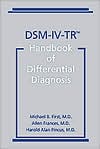Category Books
- Fiction Books & Literature
- Graphic Novels
- Horror
- Mystery & Crime
- Poetry
- Romance Books
- Science Fiction & Fantasy
- Thrillers
- Westerns
- Ages 0-2
- Ages 3-5
- Ages 6-8
- Ages 9-12
- Teens
- Children's Books
- African Americans
- Antiques & Collectibles
- Art, Architecture & Photography
- Bibles & Bible Studies
- Biography
- Business Books
- Christianity
- Computer Books & Technology Books
- Cookbooks, Food & Wine
- Crafts & Hobbies Books
- Education & Teaching
- Engineering
- Entertainment
- Foreign Languages
- Game Books
- Gay & Lesbian
- Health Books, Diet & Fitness Books
- History
- Home & Garden
- Humor Books
- Judaism & Judaica
- Law
- Medical Books
- New Age & Spirituality
- Nonfiction
- Parenting & Family
- Pets
- Philosophy
- Political Books & Current Events Books
- Psychology & Psychotherapy
- Reference
- Religion Books
- Science & Nature
- Self Improvement
- Sex & Relationships
- Social Sciences
- Sports & Adventure
- Study Guides & Test Prep
- Travel
- True Crime
- Weddings
- Women's Studies
DSM-IV-TR Handbook of Differential Diagnosis » (1st Edition)

Authors: Michael B. First, Allen Frances, Harold Alan Pincus
ISBN-13: 9781585620548, ISBN-10: 1585620548
Format: Paperback
Publisher: American Psychiatric Publishing, Incorporated
Date Published: January 2002
Edition: 1st Edition
Author Biography: Michael B. First
Michael B. First, M.D., is Associate Professor of Clinical Psychiatry at Columbia University, and Research Psychiatrist at the New York Psychiatric Institute in New York, New York.
Book Synopsis
An invaluable addition to the DSM-IV-TR Library, DSM-IV-TR® Handbook of Differential Diagnosis is a succinct reference to help ensure that you consider all the important diagnoses that need to be ruled out during a clinical evaluation. It is a great convenience for busy practitioners and a valuable overview for trainees. The Handbook provides
• The six crucial steps in differential diagnosis that must be considered for each and every patient
• 27 decision trees that teach you how to go from the most common presenting symptoms to a final diagnosis
• 62 differential diagnosis tables, each of which provides a head-to-head comparison of a disorder with its differential diagnostic contenders
• A unique symptom index for DSM-IV-TR that lists in a convenient form those disorders that you should consider when formulating a differential diagnosis given a particular symptom in the patient's presentation
The information provided in the decision trees, the differential diagnosis tables, and the symptom index is rich with information, each format with its own strengths, depending on the needs of a particular clinical situation. By presenting the problem from a number of different perspectives, this Handbook should improve your skill in formulating a comprehensive differential diagnosis.
Doody Review Services
Reviewer:Corey Goldstein, MD(Rush University Medical Center)
Description:The book is an addition to the DSM-IV in that it provides the reader with approaches to differential diagnosis of psychiatric disorders. It is written in four well-organized chapters that include steps in differential diagnosis, decision trees, diagnostic tables, and a symptom index. A unique element is the use of algorithms.
Purpose:The purpose is to improve one's skill in formulating a comprehensive differential diagnosis by presenting the problem from a number of different perspectives. This is certainly a worthy objective as psychiatric disorders can often overlap and may lead a clinician down many roads of possible treatment options. The book meets the author's objectives without problem via all of the methods described in the preface.
Audience:The book is intended for a wide audience of "clinicians" participating in mental healthcare, according to the author. It can be very useful to any student or practitioner of mental health. Clinicians who would benefit most would be psychiatrists and primary care providers.
Features:The book centers on differential diagnosis, as its title indicates. The contents include an approach to thinking about diagnoses, decision trees through symptoms, specific diagnoses with related disorders in table form, and a symptom index. It essentially helps the clinician think about disorders in a more comprehensive manner. The decision trees and algorithms are particularly helpful in that they provide an organization to an often overwhelming amount of information. The authors are quick to point out that approaches are meant to enhance as opposed to replace clinical judgment.
Assessment:This book is very practical. It can be read from cover to cover or used a reference for particular situations. The field of psychiatry can be seen as a mix of science and art. This book is a reflection of this statement in a concise and direct package. It is a welcome addition to the field of psychiatry and I would not hesitate to recommend it.
Table of Contents
Differential diagnosis step by step. Differential diagnosis by the trees. Differential diagnosis by the tables. DSM-IV-TR symptom index. Appendix: DSM-IV-TR classification.
Subjects
 Medicine
Medicine  Clinical Medicine
Clinical MedicineMedical Books
 Medicine
Medicine  Reference - Medicine
Reference - MedicineNonfiction
 Psychology
Psychology  Clinical Psychology
Clinical PsychologyNonfiction
 Psychology
Psychology  Psychological Disorders
Psychological DisordersNonfiction
 Psychology
Psychology  Psychology - Theory, History & Research
Psychology - Theory, History & ResearchPsychology & Psychotherapy
 Clinical Psychology
Clinical Psychology  Clinical Psychology - General & Miscellaneous
Clinical Psychology - General & MiscellaneousPsychology & Psychotherapy
 Psychological Disorders
Psychological Disorders  Clinical Psychology - General & Miscellaneous
Clinical Psychology - General & MiscellaneousPsychology & Psychotherapy
 Psychology - Theory, History & Research
Psychology - Theory, History & Research  Reference - Psychology
Reference - PsychologyPsychology & Psychotherapy
 Psychology - Theory, History & Research
Psychology - Theory, History & Research  Testing & Assessment - Psychology
Testing & Assessment - PsychologyMedical Books
 Psychology & Psychotherapy
Psychology & Psychotherapy  Clinical Psychology
Clinical PsychologyMedical Books
 Psychology & Psychotherapy
Psychology & Psychotherapy  Psychological Disorders
Psychological DisordersMedical Books
 Psychology & Psychotherapy
Psychology & Psychotherapy  Psychology - Theory, History & Research
Psychology - Theory, History & ResearchNonfiction
 Medicine
Medicine  Medicine
Medicine
